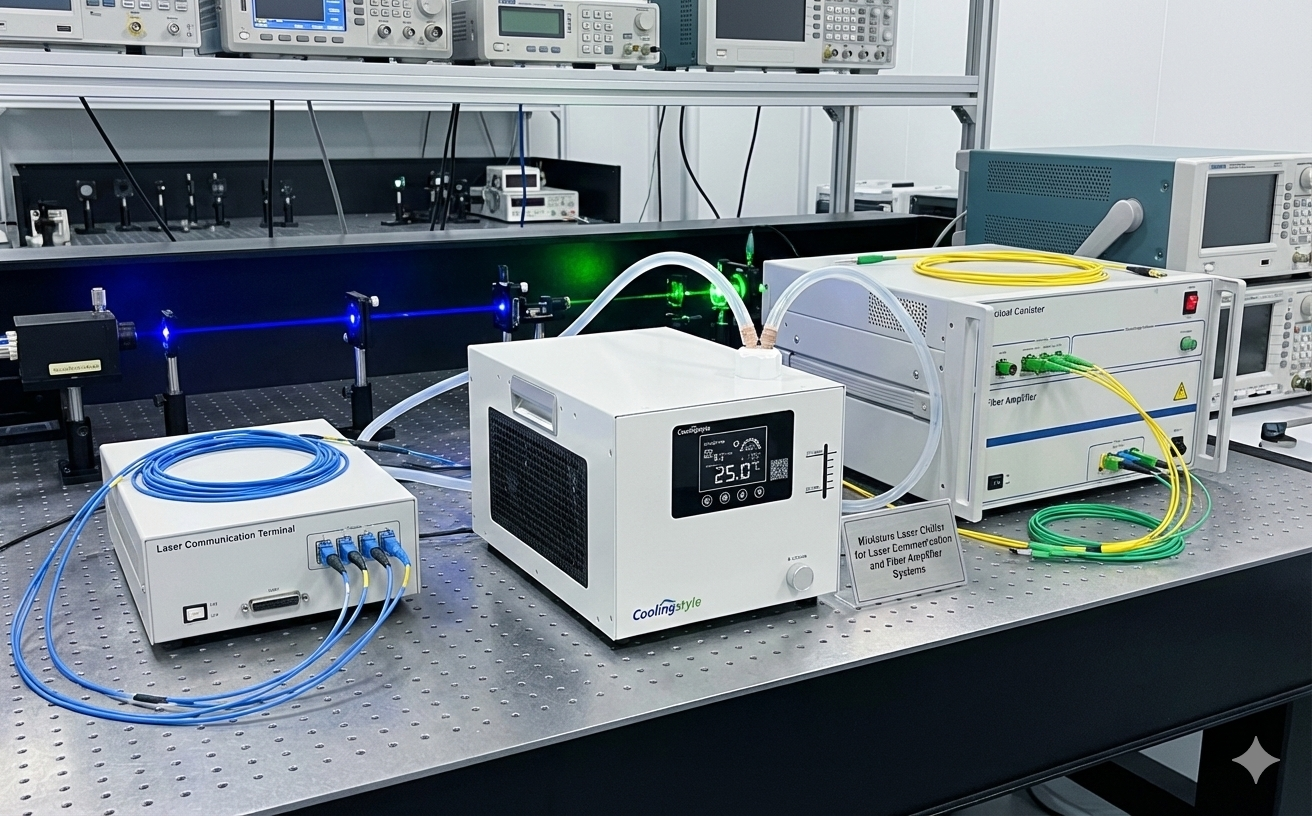Inventé dans les années 1960, Octobre. Octobre, Octobre, Octobre. Octobre.
Que peuvent faire les lasers?
- Industrie de consommation: Depuis 1974, les scanners laser ont révolutionné le commerce de détail en lisant les codes de produits universels (Octobre), ou des codes-barres.
- Fabrication: Les lasers sont largement utilisés pour la gravure, Octobre, et marquer une variété de matériaux avec précision et rapidité.
- Industrie médicale: Dans le domaine de la santé, les lasers sont utilisés pour le retrait des tissus, Octobre, procédures cosmétiques, et plus.

Pourquoi les lasers ont-ils besoin d'une gestion thermique?
Le fonctionnement des lasers, surtout industriels, génère une chaleur importante qui doit être contrôlée pour garantir efficacité et longévité. Voici pourquoi la gestion thermique est cruciale:
- Prévenir une sortie de mauvaise qualité: Pendant le fonctionnement, les lasers utilisent des gaz auxiliaires (comme l'azote, monoxyde de carbone, et hélium) convertir l'énergie électrique en lumière cohérente. Ce processus génère une chaleur importante qui, si non géré, peut dégrader les résultats de fabrication.
- Éliminer la chaleur perdue: Les diodes laser de plus grande puissance sont particulièrement sujettes aux défaillances de champ causées par une chaleur excessive. Une évacuation efficace de la chaleur évite des dommages catastrophiques et prolonge la durée de vie du laser.
- Maintenir la précision: La surchauffe diminue la précision du faisceau laser, impact négatif sur les performances.
Comment appliquer la gestion thermique aux lasers?
Pour les lasers haute puissance comme le CO2, seule une partie de l'énergie électrique est convertie en énergie laser, seule une partie de l'énergie électrique est convertie en énergie laser, seule une partie de l'énergie électrique est convertie en énergie laser, un refroidissement fiable et efficace est essentiel pour maintenir des performances constantes, seule une partie de l'énergie électrique est convertie en énergie laser. Composants clés comme les résonateurs, seule une partie de l'énergie électrique est convertie en énergie laser, et les têtes laser nécessitent un contrôle précis de la température.
La solution la plus efficace pour la gestion de la chaleur laser est l'utilisation de refroidisseurs industriels. Un refroidisseur de haute qualité garantit des températures stables et des fluctuations minimales, à pleine charge et à charge partielle, amélioration des performances du laser.
Comment choisir le bon refroidisseur pour le refroidissement laser?
Pour sélectionner le refroidisseur idéal, plusieurs facteurs doivent être pris en compte:
Chaque refroidisseur a une courbe de puissance frigorifique, un refroidisseur d'une capacité de refroidissement nominale de 550 W à une température de liquide de refroidissement et d'air ambiant de 20 °C peut répondre à des exigences spécifiques.
- Capacité de refroidissement:
- Un refroidisseur doit gérer la charge thermique du laser, exprimé en watts ou BTU/h.
- La capacité de refroidissement est définie par la performance nominale dans des conditions spécifiques (par exemple., 25Débit de liquide de refroidissement °C et air ambiant de 25 °C).
- Chaque refroidisseur a une courbe de puissance frigorifique, un refroidisseur d'une capacité de refroidissement nominale de 550 W à une température de liquide de refroidissement et d'air ambiant de 20 °C peut répondre à des exigences spécifiques.

2. Type de liquide de refroidissement:
- Le choix du liquide de refroidissement dépend des besoins du laser. Les options courantes incluent l'eau du robinet, eau glycolée, et désionisé (DEPUIS) eau.
- Eau du robinet: Souvent traité avec des additifs comme un algicide ou de l'éthylène glycol pour empêcher la croissance des algues, corrosion, ou geler.
- Eau désionisée: Nécessite des matériaux compatibles DI et un boîtier de déionisation pour maintenir les niveaux de résistivité, car il peut être corrosif pour de nombreux matériaux.
3. Performances de la pompe:
- La pompe contrôle le débit et la pression du liquide de refroidissement. Les pompes volumétriques garantissent un débit constant quels que soient les changements de pression du système.
4. Fonctionnalités supplémentaires:
- Filtres à liquide de refroidissement: Empêche les particules nocives d'endommager le laser ou la pompe.
- Interfaces de communication: Des connexions RS-485 ou similaires permettent la surveillance et le fonctionnement à distance du refroidisseur. Cela permet des ajustements pour régler la température, Autres caractéristiques, et conditions de panne.
- Alarmes de température: Les alarmes de température haute/basse protègent le laser des dommages dus à un liquide de refroidissement trop chaud ou trop froid..
- Alarmes de faible débit: Protège le refroidisseur et le laser du liquide de refroidissement gelé.
Les refroidisseurs avec ce compresseur miniature ont les avantages ci-dessous
Une bonne gestion thermique est essentielle pour que les systèmes laser maintiennent leurs performances, prévenir les dommages, et assurer une longue durée de vie. Les refroidisseurs industriels sont la pierre angulaire d’un refroidissement efficace, offrant un contrôle précis de la température, dispositifs de sécurité robustes, et compatibilité avec divers besoins de refroidissement. En choisissant le bon refroidisseur et le bon liquide de refroidissement, les systèmes laser peuvent fonctionner de manière optimale, prendre en charge en toute confiance des applications exigeantes et de haute précision.






2 réflexions sur "Le rôle essentiel de la gestion thermique dans les applications laser”
Votre style est tellement unique par rapport à d'autres personnes dont j'ai lu des trucs.
Merci de poster quand vous en avez l'occasion, Je suppose que je vais juste mettre en signet ce site Web.
Yay Google est mon batteur mondial m'a aidé à trouver ce site exceptionnel! .